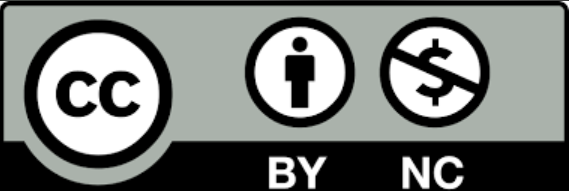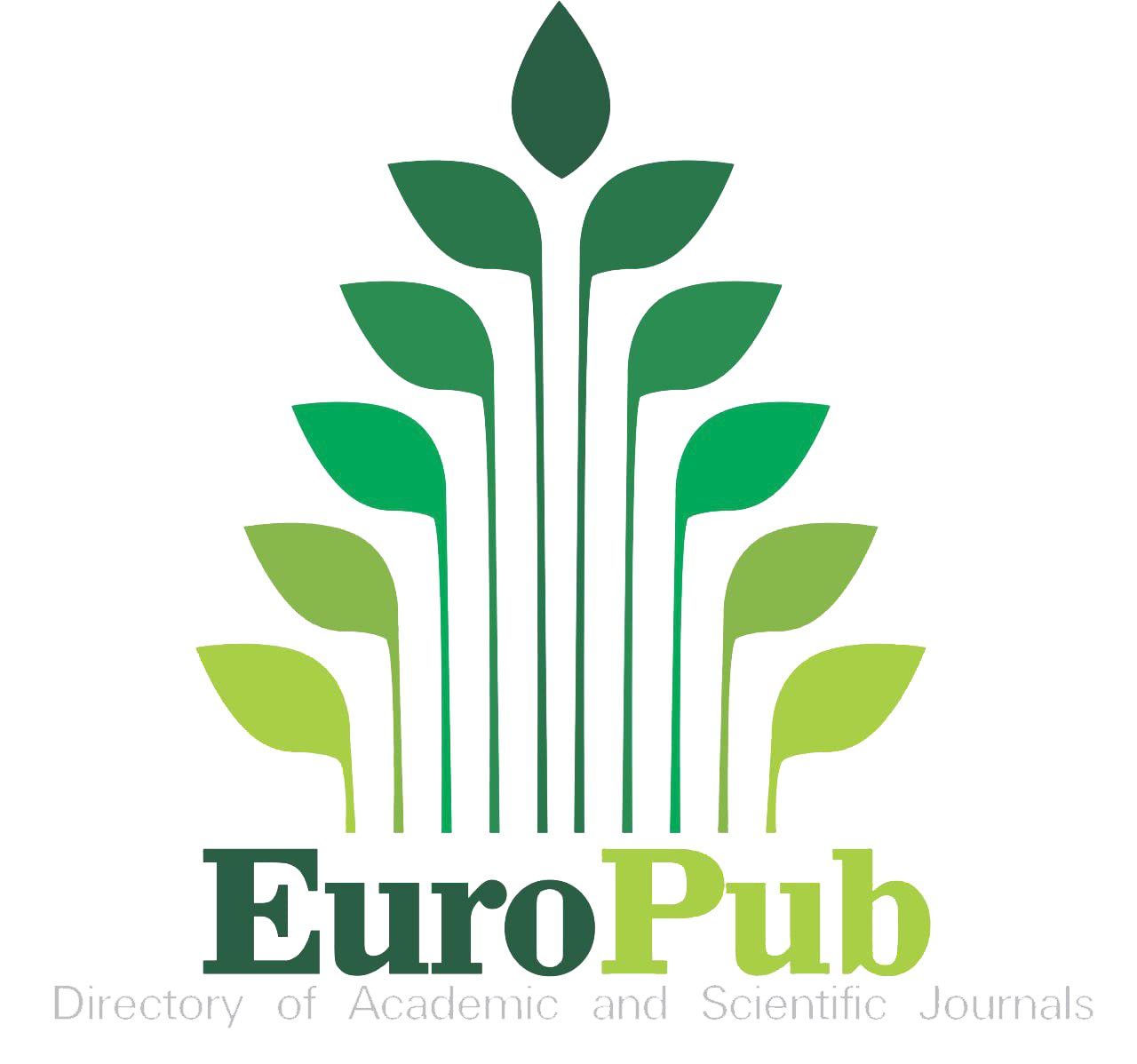Abstract
Among the most serious problems affecting public health is urinary tract infection (UTI). There are several parts of the urinary tract affected by this type of inflammation and affects women more frequently than men. As the antibacterial resistance problem is growing in urological medicine, there is a increasing and a continuing requirement to add antimicrobial medication which could be from medicinal herbs in regulatory UTIs. Since the beginning of civilization, medicinal plants have been an integral element of human society in the fight against diseases. For the aim of reducing costs, increasing the effectiveness of treatment and eliminating the side effects of UTI patients, medicinal plants have gained wide popularity and great interest. Medicinal plants have been known as a rich source of therapeutic agents. A number of different plants show promise the ability to treat of a various urologic disorders. As the current review illustrates, a number of traditional medicinal plants are evaluated to prevent or treat UTIs, and modern scientific investigations on these important herbs and some isolated chemical compounds.
Recommended Citation
Saleh, Rasha Hadi; Omran, Aseel Mohammad; and AlHilla, Rafah S. Almuttairi
(2023)
"Traditional plants that are utilized to treat urinary tract infections: A review,"
Maaen Journal for Medical Sciences: Vol. 2
:
Iss.
1
, Article 1.
Available at: https://doi.org/10.55810/2789-9136.1012
References
- Bahmani M, Saki K, Shahsavari S, Rafieian-Kopaei M, Sepahvand R, Adineh A. Identification of medicinal plants effective in infectious diseases in Urmia, northwest of Iran. Asian Pac J Trop Biomed 2015;5(10):858e64. https://doi.org/10.1016/j.apjtb.2015.06.004
- Sihra N, Goodman A, Zakri R, Sahai A, Malde S. Nonantibiotic prevention and management of recurrent urinary tract infection. Nat Rev Urol 2018;15:750e76. https://doi.org/10.1038/s41585-018-0106-x
- Shaheen G, Akram M, Jabeen F, Ali Shah SM, Munir N, Daniyal M, et al. Therapeutic Potential of Medicinal Plants for the Management of Urinary Tract Infection: A Systematic Review. Clin Exp Pharmacol Physiol 2019;46:613e24. https://doi.org/10.1111/1440-1681.13092
- Arsene MMJP, Viktorovna PI, Davares AKL, Esther N, Nikolaevich SSA. Urinary tract infections: Virulence factors, resistance to antibiotics, and management of uropathogenic bacteria with medicinal plantsdA review. J Appl Pharmaceut Sci 2021;11(7):1e12.
- Bazzaz BSF, Fork SD, Ahmadi R, Bahman Khameneh B. Deep insights into urinary tract infections and effective natural remedies. Afr J Urol 2021;27:6. https://doi.org/10.1186/s12301-020-00111-z
- Loubet P, Ranfaing J, Dinh A, Dunyach-Remy C, Bernard L, Bruyere F, et al. Alternative Therapeutic Options to Antibiotics for the Treatment of Urinary Tract Infections. Front Microbiol 2020;11:1509. https://doi.org/10.3389/fmicb.2020.01509
- Al-Badr A, Al-Shaikh G. Recurrent Urinary Tract Infections Management in Women. Sultan Qaboos Univ Med J 2013; 13(3):359e67. https://doi.org/10.2816/0003256
- Sharma A, Chandraker S, Patel VK, Ramteke P. Antibacterial Activity of Medicinal Plants Against Pathogens causing Complicated Urinary Tract Infections. Indian J Pharmaceut Sci 2009;71(2):136e9. https://doi.org/10.4103/0250-474X.54279
- Cock I, Mavuso N, Vuuren SV. A Review of Plant Based Therapies for the Treatment of Urinary Tract Infections in Traditional Southern African Medicine. Evid base Compl Alternative Med 2021;2021:1e20. https://doi.org/10.1155/2021/7341124
- Sheerin NS, Glover EK. Urinary tract infection. Medicine 2019;47:546e50. https://doi.org/10.1016/j.mpmed.2019.06.008
- Mody L, Juthani-Mehta M. Urinary tract infections in older women: a clinical review. JAMA 2014;311(8):844e54. https://doi.org/10.1001/jama.(2014).303
- Flower A, Wang L-Q, Lewith G, Liu JP, Li Q. Chinese herbal medicine for treating recurrent urinary tract infections in women. Cochrane Database Syst Rev 2015;6.https://doi.org/10.1002/14651858.CD010446.pub2
- Flower A, Harman K, Lewith G, Moore M, Bishop FL, Stuart B, et al. Standardised Chinese herbal treatment delivered by GPs compared with individualised treatment administered by practitioners of Chinese herbal medicine for women with recurrent urinary tract infections (RUTI): study protocol for randomised controlled trial. Trials 2016;17(1):358.https://doi.org/10.1186/s13063-016-1471-5
- Das DC, Sinha NK, Patsa MK, Das M. Investigation of herbals for the treatment of leucorrhoea from south west Bengal, India. Int J Bioassays 2015;4:4555e9.https://doi.org/10.21746/IJBIO (2015); 11.0022
- Gibson L, Pike L, Kilbourn JP. Effectiveness of cranberry juice in preventing urinary tract infections in long-term care facility patients. J Naturop Med 2019;2:45e7.https://doi.org/10.1111/jgs.(2014).303
- Das Sarita. Natural therapeutics for urinary tract infectionsda review. Future Journal of Pharmaceutical Sciences. Das Future Journal of Pharmaceutical Sciences. 2020; 6(64):1e13. https://doi.org/10.1186/s43094-020-00086-2
- Bag A, Bhattacharyya SK, Chattopadhyay RR. Medicinal Plants and Urinary Tract Infections: An update. Phcog Rev 2008;4:277e84.
- Saeed S. Herbal remedies for urinary tract infection. Int J Biol Biotechnol 2010;7(4):347e52.
- Hisano M, Bruschini H, Nicodemo AC, SrougiI M. Cranberries and lower urinary tract infection prevention. Clinics 2012;67(6):661e7. https://doi.org/10.6061/clinics/2012(06)18
- Benzie IFF. Wachtel-Galor Sherbal Medicine:Biomolecular and clinical aspects. second ed. CRC Press/Taylor & Francis; 2011. https://doi.org/10.1201/b10787
- Andrade JM, Faustino C, Garcia C, Ladeiras D, Reis CP, Rijo P. Rosmarinus officinalis L.: an update review of its phytochemistry and biological activity. Future Sci 2018;4(4): FSO283. https://doi.org/10.4155/fsoa-2017-0124
- Mourad MH, Salih SA, Mahmoud M, Elaasser MA, Safwat NA, Mostafa Y, et al. Antibacterial activity of certain medical plant and their essential oils on the isolated bacteria from UTI patients. Int J Adv Res 2016;4(12):1510e30. https://doi.org/10.21474/IJAR01/2551
- Ebani VV, Nardoni S, Bertelloni F, Pistelli L, Mancianti F. Antimicrobial Activity of Five Essential Oils against Bacteria and Fungi Responsible for Urinary Tract Infections. Molecules 2018;23(7):1668. https://doi.org/10.3390/molecules23071668
- Dauqan EMA, Abdullah A. Medicinal and Functional Values of Thyme (Thymus vulgaris L.) Herb. J Appl Biol Biotechnol 2017;5(2):17e22. https://doi.org/10.7324/JABB.2017.50203
- Lagha R, Abdallah FB, Al-Sarhan BO, Al-Sodany Y. Antibacterial and Biofilm Inhibitory Activity of Medicinal Plant Essential Oils Against Escherichia coli Isolated from UTI Patients. Molecules 2019;24(6):1161. https://doi.org/10.3390/molecules24061161
- Khalil N, Bishr M, Desouky S, Salama O, Ammi Visnaga L. A Potential Medicinal Plant: A Review. Molecules 2020;12(2): 301. https://doi.org/10.3390/molecules25020301
- Kashmar AM, Naser EH. Comparison Between Two Extraction Methods on Total Extract with Primary Investigation of Phytochemical Compounds of Some Medicinal Plants used in Treatment of Urinary Tract Disease. Kerbala journal of pharmaceutical sciences 2017;13:29e36.
- Saleh RH, Hindi NKK, Abid Ali MR. Antibacterial Activity of Aquatic Zea Mays L. Hairs Extract against Different Bacteria in Babylon Province: An In Vitro Study. Journal of Global Pharma Technology 2017;8(9):121e9.
- Poulios E, Vasios GK, Psara E, Giaginis C. Medicinal plants consumption against urinary tract infections: a narrative review of thecurrent evidence. Expert Rev Anti Infect Ther 2020;19(4):519e28. https://doi.org/10.1080/14787210.2021.1828061
- Yarnell E. Botanical medicines for the urinary tract. World J Urol 2020;20(5):285e93. https://doi.org/10.1007/s00345-002-0293-0
- Patel DK, Kumar, Sairam RK, Hemalatha S. Hybanthus enneaspermus (L.) F. Muell: a concise report on its phytopharmacological aspects. Chin J Nat Med 2013;11(3):199e206. https://doi.org/10.1016/S1875-5364(13)60017-5
- Mandal SK, Maji AK, Mishra SK, Ishfaq PM, Devkota HP, Silva AS, et al. Goldenseal (Hydrastis canadensis L.) and its active constituents a critical review of their efficacy and toxicological issues. Pharmacol Res 2020;160:105085. https://doi.org/10.1016/j.phrs.2020.105085
- Pol M, Schmidtke K, Lewandowska S. Plantago lanceolata eAn overview of itsagronomically and healing valuable features. Open Agriculture 2021;6:479e88. https://doi.org/10.1515/opag-2021-0035.
- Bezalwar PM, Charde VN. Study on synergistic action of Coriandrum sativum seed extracts on antibiotics against multidrug resistant P. aeruginosa. Environ Conserv J 2019; 20(3):83e8. https://doi.org/10.36953/ECJ.2019.20312.
- Vatsa N, Tripathi GS. Biological study of corianadrum sativum against gram negative urinary bacteria. Int J Chem Sci 2012;10(4):2105e10.
- Sood A, Kaur P, Gupta R. Phytochemical screening and antimicrobial assay of various seeds extract of Cucurbitaceae family. IntAppl Biol Pharm Technol 2012;3:401e9.
- Sariyantoa I. Potency of Suri Cucumber Juice Cucumis sativus) as a Solvent for Calcium Oxalate Kidney Stones( CaC2O4). International journal of innovation, creativity and change. Special Edition. Safe Communities; 2020 https://doi.org/10.11648/j.sjbm.s.2020030601.14.
- Kheirabadi Z, Mehrabani M, Sarafzadeh F, Dabaghzadeh F, Ahmadinia N. Green tea as an adjunctive therapy for treatment of acute uncomplicated cystitis in women: a randomized clinical trial. Complement. Ther Clin Pract 2019;34:13e6. https://doi.org/10.1016/j.ctcp.2018.10.018.
- Noormandi A, Dabaghzadeh F. Effects of green tea on Escherichia coli as a uropathogen. J Tradit Complement Med 2015;5(1):15e20. https://doi.org/10.1016/j.jtcme.2014.10.005.
- Jamshed A, Jabeen Q. Pharmacological Evaluation ofMentha piperita Against Urolithiasis: An In Vitro and In Vivo Study. Dose-Response. Int J 2022;20(1):15593258211073087. https://doi.org/10.1177/15593258211073087.
- Yadav RD, Alok S, Jain SK, Verma A, Mahor A, Bharti JP, et al. Herbal plants used in the treatment of urolithiasis: A review. 2011. p. 1412e20. https://doi.org/10.13040/IJPSR.0975-8232.2(6).1412-20.
- Saranraj P, Sivasakthivelan P. Screening of Antibacterial Activity of the Medicinal Plant Phyllanthus amarus Against Urinary Tract Infection Causing Bacterial Pathogens. Applied Journal of Hygiene 2012;1(3):19e24. https://doi.org/10.5829/idosi.ajh.2012.1.3.71111.
- Vineeth T, Deepak M, Shree A. Antibacterial effect of Boerhavia Diffusa and Punarnavasavam on urinary tract infection (UTI) causing pathogens. World J Pharmaceut Res 2014;3(5): 423e37.
- Al-Bayati FA, Al-Mola HF. Antibacterial and antifungal activities of different parts of Tribulus terrestris L. growing in Iraq. J Zhejiang Univ - Sci B 2008;9(2):154e9. https://doi.org/10.1631/jzus.B0720251.
- Faujdar SS, Bisht D, Sharma A. Antibacterial potential of neem (Azadirachta indica) against uropathogens producing beta-lactamase enzymes: A clue to future antibacterial agent. Biomed Biotechnol Res J 2020;4:232e8. https://doi.org/10.4103/bbrj.bbrj_38_20.
- Manjula P, Moha CH, Sreekanth D, Keerthi B, Devi BP. Phytochemical analysis of Clitoria ternatea Linn., a valuable medicinal plant. J Indian Bot Soc 2013;92(3and4): 173e8.
- Radha KV, Arun T, Srinivas Pidugu S.Antibacterial activity and phytochemical screening of Clitoria Ternatealinn . against proteus mirabilis from urinary tract infected patients. World J Pharmaceut Res 2014;3(3):4351e66.
- Shukla A, Garg A, Mourya P, Jain CP.Zizyphus oenoplia Mill: Areview on Pharmacological aspects.Advance Pharmaceutical Journal 2016;1(1):8e12.
- Behera KK. Ethnomedicinal Plants used by the Tribals of Similipal Bioreserve, Orissa, India: A Pilot Study. Ethnobotanical Leaflets 2006;10:149e73.
- Shad A, Ahmad S, Ullah R, AbdEl-Salam NM, Fouad HF, Rehman NU, et al. Phytochemical and biological activities of four wild medicinal plants. Sci World J 2014:857363. https://doi.org/10.1155/2014/857363.
- Dhawale PG. Phytochemical analysis of eight medicinal plants from Amravati district(MS) india. Inter J Sci Res Publications 2013;3:1e3.
- Khadabadi SS, Bhajipale NSA. Review on Some Important Medicinal Plants of Abutilon spp. Res J Pharmaceut Biol Chem Sci 2010;1(4):718. https://rjpbcs.com/pdf/20101(4)/[75].pdf.
- Anand M, Prabarakaran P, Pradeepa V. A study on the phytochemicals characterization and antimicrobial potential of Andrographis. paniculata. J Pharm Res 2011;4:530e1.
- Rasool USP, Parveen A, Sah SK, Hemalatha S. Efficacy of Andrographis paniculata against extended spectrum blactamase (ESBL) producing E. coli. BMC Compl Alternative Med 2018;18:244. https://doi.org/10.1186/s12906-018-2312-8.
- Rokaia B, Elamary RB, Albarakaty FM, Wesam M, Salem M. Efficacy of Acacia nilotica aqueous extract in treating bioflmforming and multidrug resistant uropathogens isolated from patients with UTI syndrome. Sci Rep 2020;10:11125. https://doi.org/10.1038/s41598-020-67732-w.
- Varma RK, Garg VK, Singh L, Kumar D. Pharmacognostic evaluation and phytochemical analysis of seeds of Vigna mungo (L) hepper. Open Res J Phytother Pharmacogn 2013; 1:01-09.
- Patel P, Ramanarao TV. Growth and Ripening in Black Plum Syzygium cumini (L.) Skeels. Int J Fruit Sci 2014;14:147e56. https://doi.org/10.1080/15538362.2013.817842.
- Khan KH. Roles of Emblica officinalis in medicine-a review. Bot Res Int 2009;2(4):218e28.
- Saeed S, Tariq P. Antibacterial activities of Emblica officinalis and Coriandrum sativum against Gram negative urinary pathogens. Pak J Pharm Sci 2007;20(1):32e5. https://doi.org/10.12669/pjms.343.14982.
- Komal S, Kazmi SAJ, Khan JA, Gilani MM. Antimicrobial activity of Prunella Vulgaris extracts against multi-drug resistant Escherichia Coli from patients of urinary tract infection. Pakistan J Med Sci 2018;34(3):616e20. https://doi.org/10.12669/pjms.343.14982.
- Perazada TA, Gupta J. Distribution of phytochemicals in stems and leaves of Cichorium intybus and Matricaria chamomilla: assessment of their antioxidant and antimicrobial potential. Journal of Biotechnology, Computational Biology and Bionanotechnology 2018;99(2):119e28. https://doi.org/10.5114/bta.2018.75655.
- Mohamed SA, Mathew C. Antimicrobial Activity of Bidens pilosa Leaves Extracts Against Staphylococcus aureus and Escherichia coli. Tanzania Veterinary Journal 2021;38. https://doi.org/10.4314/tvj.v38i1.4s. special Issue of TVA proceedings.
- Piratheepkumar K, Manoharan A, Rajarajeshwari A. A systematic review on selected medicinal plants used in the management of neerchurukku(UTI). International Ayurvedic Medical Journal 2021:520e8. https://doi.org/10.46607/iamj0209032021.
- Saxena S. To study the comparative effectiveness of Pimpinella anisum seed extract and standard antibiotics for urinary tract infections. International Journal of Medical and Biomedical Studies 2020;4(4):24e7. https://doi.org/10.32553/ijmbs.v4i4.1079.
- Fareed I. Using aqueous extract of Malva sylvestris as inhibitor for the growth of some microorganisms that urinary tract infections. IJABR 2017;7(2):329e34.

















Indexed in: